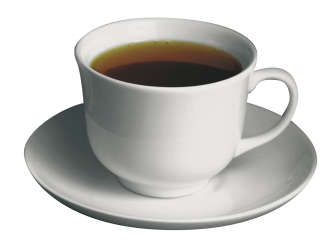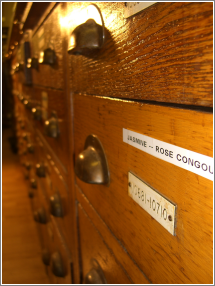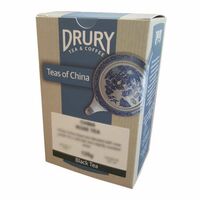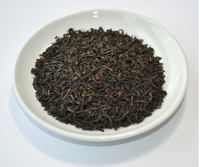Tightly rolled leaves which produce a unique aroma and a fresh, smooth flavour.
- Black Tea
- Teas of China

Always fill your kettle with fresh cold water
Never from the hot tap or pre-boiled water.
Bring the kettle to the boil
Off the boil for green, white and oolong teas, and herbal infusions (85 degrees is ideal).
If using a teapot, warm it before brewing
A constant temperature aids consistent infusion.
Use good quality loose leaf teas or Drury pyramid bags
For traditionalists who love loose tea, fine leaf teas are the strongest and brew quickest (see below), whereas larger leaf teas have a more delicate flavour.
At Drury we use the same fine quality leaf teas in our pyramid tea bags so there is no compromise on flavour for those who prefer this more convenient brewing method.
Allow tea to brew for 3-5 minutes
How long you brew your tea is a matter of personal preference. We recommend an optimum brewing time of between 3 and 5 minutes, and sometimes less for green tea as over-extraction can lead to bitterness. The key here is to experiment with your chosen tea until you find the flavour that suits you best.
Stir (or swirl) the tea in the pot once or twice while it is brewing
Stirring the leaves in the pot helps maintain an even infusion, and if you are using Drury pyramid bags we recommend giving them an occasional swirl for the same reason.
 Green Tea (unoxidised)
Green Tea (unoxidised)
Green teas undergo less processing than black teas. Green teas are completely unoxidized, and instead the freshly plucked leaves are fired (heated) as soon as possible after harvesting to halt any oxidisation. Once dried they are then sorted and graded, ready for brewing. By their very nature, green teas are much lighter than black and are rich in antioxidants, making them the tea of choice for many health-conscious consumers. Green teas should be brewed at a lower temperature than black (85 degrees is an ideal average) and should never be drunk with milk. As soon as the leaves have been plucked, they are laid out to dry and then heat treated to halt fermentation. In some cases the leaves are steamed to prevent the fermentation process. The teas may then be rolled and broken to produce various leaf sizes. Green teas should never be drunk with milk.
Oolong Tea (semi-oxidised)
Sitting midway between black and green teas, oolong teas are semi-oxidised. The leaves are initially treated in much the same way as black teas, but then the process is halted by firing (heating) before reaching full oxidisation. The characteristic of the final brew is greatly influenced by when the process is stopped, resulting in greenish or blackish oolongs. In all cases, oolong teas should be brewed with cooler water and should never have milk added. These teas are allowed to ferment for a specified period of time (which differs from China and Formosan teas) before the process is halted. Oolong teas are always whole leaves and again, should not be drunk with milk.
Black Tea (oxidised)
The most popular method of manufacture, black teas are allowed to fully oxidise to produce the strongest flavour and colour. The freshly plucked leaves are crushed, releasing enzymes which turn the leaf black whilst also deepening and intensifying its flavour. The longer a tea is oxidised, the darker and stronger it becomes, and the process is halted by firing (heating) the leaves. The inherent skills of plucking, processing and sorting the finished leaves determines the quality of the tea. The leaf sizes are usually graded as follows:
Orange Pekoe and Flowery Orange Pekoe (OP & FOP)
The largest leaf size of black teas, made from the end bud and first leaf of each shoot. These teas have the lightest and most delicate flavour of black teas.
Tippy Golden Flowery Orange Pekoe (TG FOP)
FOP teas with golden tips (from the golden buds)
Finest Tippy Golden Flowery Orange Pekoe (FTG FOP1)
Very high quality golden tipped FOP tea.
Broken Orange Pekoe (BOP)
A smaller leaf size than FOP, it may similarly be further characterised as GBOP (Golden BOP) and TGBOP (Tippy Golden BOP).
Fine Leaf Fannings
The smallest leaf size that produces the most strength and colour.
China
China tea is not usually graded. All our China teas are of the highest Orange Pekoe variety.






















